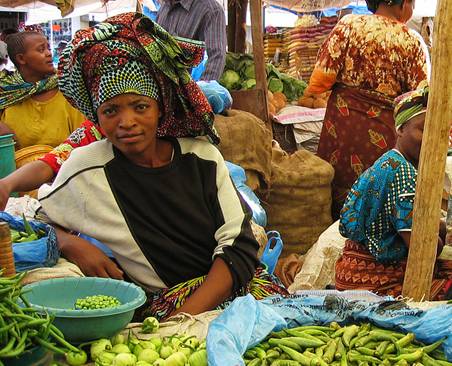Empowerment of women
 In
the section on microcredit, we saw that one way in which women can be
empowered is by providing schemes that lend money to them directly to
fund start-up enterprises. This is how the Grameen bank started.
In
the section on microcredit, we saw that one way in which women can be
empowered is by providing schemes that lend money to them directly to
fund start-up enterprises. This is how the Grameen bank started.
Earlier in this section we also considered the role of education generally in underpinning development. However, there is evidence that suggests that it is the lack of education for girls that is a particular constraint on economic development.
Investment in girls' education does not just benefit the individual concerned, but has a positive impact of the wider society. For example, girls who are educated are less likely to be infected by AIDs or to be exploited by those who engage in human trafficking operations.
We have seen that the lack of education for girls can have a detrimental effect on a country's development. However, the lack of empowerment of women of all ages is also identified as a major constraint on development. Women often bear the disproportionate burdens of poverty, poor education, high unemployment and low social status and mobility and restricted access to birth control.
Characteristics of lack of empowerment include:
- High fertility rates
- High population growth
Many NGO initiatives are targeting their development efforts on activities that empower women by improving their status, providing access to health and education and by encouraging economic self-sufficiency. All of these initiatives lead to lower fertility rates, delayed marriage and lower population growth.
Millennium development goals
Two millennium goals specifically relate to the empowerment of women.
Goal 3: PROMOTE GENDER EQUALITY AND EMPOWER WOMEN
Target 3.A:
Eliminate gender disparity in primary and secondary
education, preferably by 2005, and in all levels of education no later
than 2015
Goal 5: IMPROVE MATERNAL HEALTH
Target 5.A:
Reduce by three quarters the maternal mortality ratio
Target 5.B:
Achieve universal access to reproductive health
Providing improved access to education and employment opportunities outside the home and enabling a greater degree of economic self-sufficiency allows women more choice of when, and to whom, they marry. The ability to earn personal income ensures greater financial independence from the male members of the family and necessity to be reliant on male members of the family for their financial security.
For many young women without employment and income, the only way to guarantee some form of security is to accept early marriage and child bearing.
Referring to the PPC empowering women will improve both the quantity and quality of the factor labour